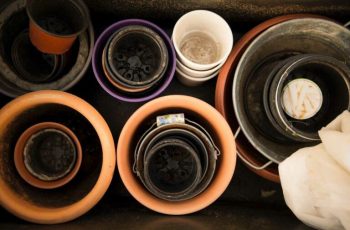Composting food waste is a highly beneficial practice that helps reduce landfill contributions, saves space, and promotes healthier gardens. For beginners, a common question is, “What can you compost?” This guide provides a detailed overview of various compostable materials and the importance of balancing them effectively.

To start, it’s essential to understand the two types of organic materials involved in composting: brown and green. Brown materials, such as leaves, straw, and cardboard, are rich in carbon. In contrast, green materials, including fruit scraps, vegetable trimmings, and grass clippings, provide nitrogen. An effective compost pile requires a balance of both types. Too few brown materials can lead to nutrient retention issues, while insufficient green materials may limit oxygen availability, hindering decomposition.
Here’s a breakdown of compostable items categorized by source:
Kitchen Ingredients:
- Brown Materials: Cardboard boxes from cereal and pasta, coffee filters, eggshells, paper towels, and paper bags. Shredding these items can enhance their composting efficiency.
- Green Materials: Fresh fruit and vegetable scraps, avocado pits, coffee grounds, and dairy products (use sparingly).
Household Ingredients:
- Brown Materials: Natural fabrics like cotton clothing, colored paper, newspapers, and non-glossy envelopes. Ensure any glossy or plastic items are removed before composting.
- Green Materials: Dryer lint (from natural fibers) and non-glossy junk mail can add to your compost mix.
Garden and Yard Ingredients:
- Brown Materials: Dead leaves, straw, sawdust from untreated wood, and ashes from burned, untreated wood. These materials contribute valuable carbon to the compost.
- Green Materials: Grass clippings, weeds, and trimmed leaves provide essential nitrogen and moisture.
Bathroom Ingredients:
- Brown Materials: 100% cotton products like cotton balls, facial tissues, hair, and natural loofahs. Avoid synthetic materials that do not decompose well.
- Green Materials: Menstrual blood and urine can be composted, but care must be taken to manage pathogens.
Pet-Related Ingredients:
- Brown Materials: Fur from pets and dry pet food can contribute to the compost pile.
- Green Materials: Animal droppings, such as from herbivores, can be composted, but caution is advised to avoid pathogens.
For successful composting, it’s crucial to cut larger items into smaller pieces to accelerate decomposition. Avoid adding large quantities of wet materials all at once; instead, incorporate them gradually. Utilizing a compost bin with adequate airflow will help maintain aerobic conditions, which are vital for effective composting. Additionally, keeping a record of what you add to your compost can help maintain the right balance of ingredients.

In conclusion, composting is an excellent way to recycle organic waste, significantly reduce landfill impact, and create nutrient-rich soil for gardening. By understanding what can be composted and how to maintain a balanced compost pile, you can embrace composting as a rewarding and environmentally friendly activity that benefits both your garden and the planet.


